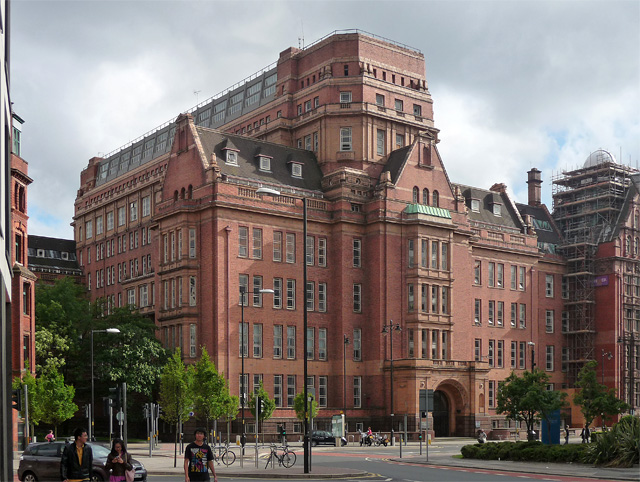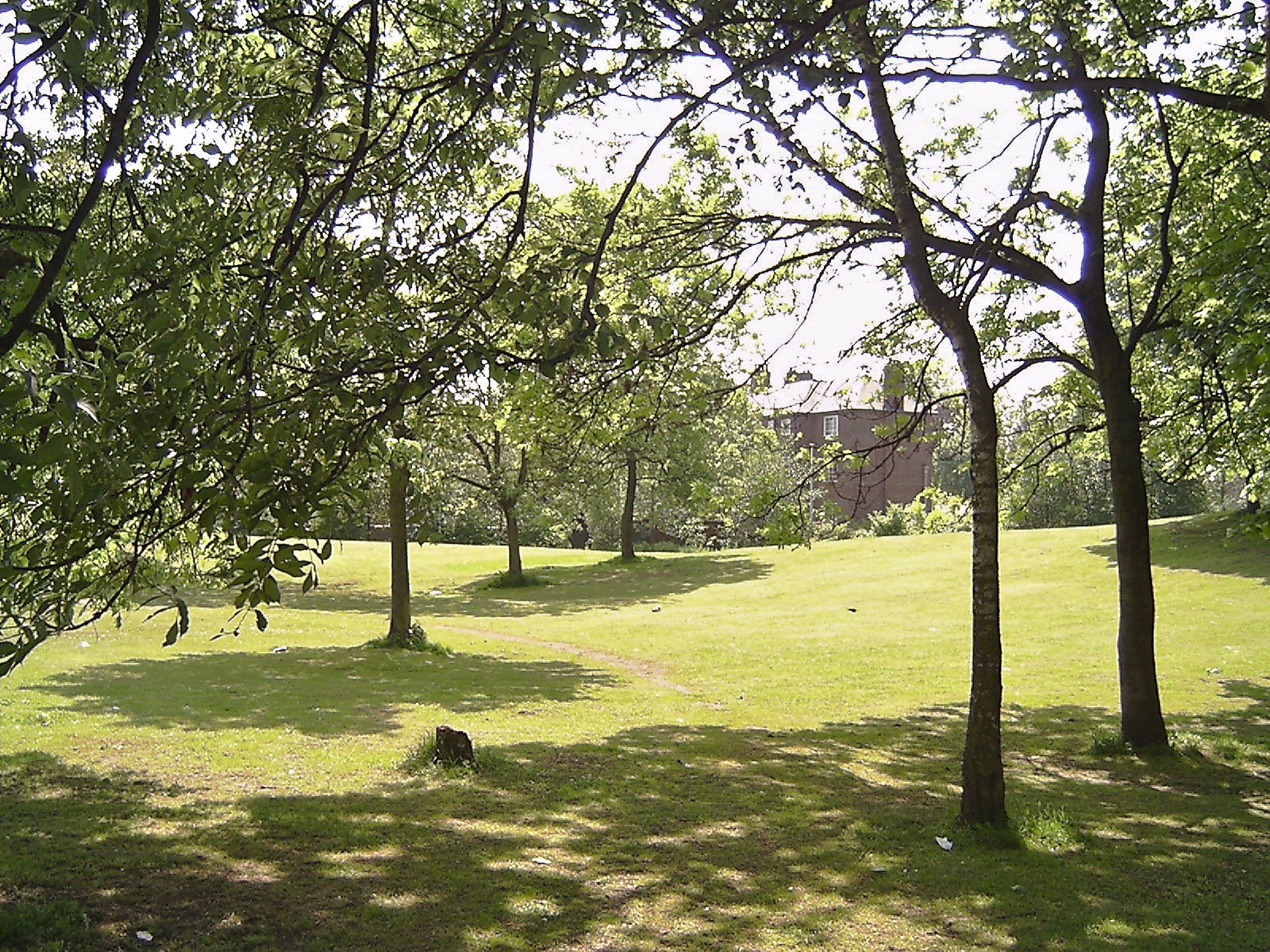|
Manchester Art Gallery
Manchester Art Gallery, formerly Manchester City Art Gallery, is a publicly owned art museum on Mosley Street in Manchester city centre, England. The main gallery premises were built for a learned society in 1823 and today its collection occupies three connected buildings, two of which were designed by Sir Charles Barry. Both of Barry's buildings are Listed building, listed. The building that links them was designed by Hopkins Architects following an architectural design competition managed by RIBA Competitions. It opened in 2002 following a major renovation and expansion project undertaken by the art gallery. Manchester Art Gallery is free to enter and open six days a week, closed Mondays. It houses many works of local and international significance and has a collection of more than 25,000 objects. More than half a million people visited the museum in the period of a year, according to figures released in April 2014. History Royal Manchester Institution The Royal Manchester ... [...More Info...] [...Related Items...] OR: [Wikipedia] [Google] [Baidu] |
Mosley Street
Mosley Street is a street in Manchester, England. It runs between its junction with Piccadilly Gardens and Market Street to St Peter's Square. Beyond St Peter's Square it becomes Lower Mosley Street. It is the location of several Grade II and Grade II* listed buildings. Mosley Street tram stop was located near Piccadilly Gardens. In 2009, the tram lines on Mosley Street were reconstructed. Historically buses used Mosley Street en route to Piccadilly Gardens, however the services were rerouted along Portland Street in 2011. The street is now used by Metrolink trams and no cars are permitted on the street, although emergency service vehicles can still use the road and traffic signals at junctions remain in operational. The tram stop closed on 17 May 2013. History The streets in the neighbourhood were laid in the 1780s and by the early 19th century Mosley Street was the centre of the fashionable residential part of town with institutions such as the Portico Library and the ... [...More Info...] [...Related Items...] OR: [Wikipedia] [Google] [Baidu] |
Lillian Williamson
Lillian Forrester ( Williamson; 1879–1916) was a British suffragette who led an attack on paintings at Manchester Art Gallery. Life She was born Lillian Williamson in 1879, and was the second daughter of Arthur Williamson, a commercial clerk, and Elizabeth Hall. She attended Owen's College, which later became Victoria University of Manchester. She had a degree in History. Forrester joined the Women's Social and Political Union (WSPU) and served as secretary of the Manchester branch. In 1911 Forrester was invited to Eagle House near Bath by Linley Blathwayt and Emily Blathwayt. The Blathwayts invited leading suffragettes to visit their house. They created over 40 memorial trees to celebrate these visits in what was known as "Annie's Arbour." Forrester led an attack on the Manchester Art Gallery on 3 April 1913 against the imprisonment and ill treatment of Emmeline Pankhurst. She, Evelyn Manesta and Annie Briggs waited until the gallery was closing and then proceeded to break ... [...More Info...] [...Related Items...] OR: [Wikipedia] [Google] [Baidu] |
Plinth
A pedestal or plinth is a support at the bottom of a statue, vase, column, or certain altars. Smaller pedestals, especially if round in shape, may be called socles. In civil engineering, it is also called ''basement''. The minimum height of the plinth is usually kept as 45 cm (for buildings). It transmits loads from superstructure to the substructure and acts as the retaining wall for the filling inside the plinth or raised floor. In sculpting, the terms base, plinth, and pedestal are defined according to their subtle differences. A base is defined as a large mass that supports the sculpture from below. A plinth is defined as a flat and planar support which separates the sculpture from the environment. A pedestal, on the other hand, is defined as a shaft-like form that raises the sculpture and separates it from the base. An elevated pedestal or plinth that bears a statue, and which is raised from the substructure supporting it (typically roofs or corniches), is some ... [...More Info...] [...Related Items...] OR: [Wikipedia] [Google] [Baidu] |
Ashlar
Ashlar () is a cut and dressed rock (geology), stone, worked using a chisel to achieve a specific form, typically rectangular in shape. The term can also refer to a structure built from such stones. Ashlar is the finest stone masonry unit, and is generally rectangular (cuboid). It was described by Vitruvius as ''opus isodomum'' or trapezoidal. Precisely cut "on all faces adjacent to those of other stones", ashlar is capable of requiring only very thin joints between blocks, and the visible face of the stone may be Quarry-faced stone, quarry-faced or feature a variety of treatments: tooled, smoothly polished or rendered with another material for decorative effect. One such decorative treatment consists of small grooves achieved by the application of a metal comb. Generally used only on softer stone ashlar, this decoration is known as "mason's drag". Ashlar is in contrast to rubble masonry, which employs irregularly shaped stones, sometimes minimally worked or selected for simi ... [...More Info...] [...Related Items...] OR: [Wikipedia] [Google] [Baidu] |
Greek Revival Architecture
Greek Revival architecture is a architectural style, style that began in the middle of the 18th century but which particularly flourished in the late 18th and early 19th centuries, predominantly in northern Europe, the United States, and Canada, and Greece following that nation's independence in 1821. It revived many aspects of the forms and styles of ancient Greek architecture, including the Greek temple. A product of Hellenism (neoclassicism), Hellenism, Greek Revival architecture is looked upon as the last phase in the development of Neoclassical architecture, which was drawn from Roman architecture. The term was first used by Charles Robert Cockerell in a lecture he gave as an architecture professor at the Royal Academy of Arts in London in 1842. With newfound access to Greece and Turkey, or initially to the books produced by the few who had visited the sites, archaeologist–architects of the period studied the Doric order, Doric and Ionic order, Ionic orders. Despite its un ... [...More Info...] [...Related Items...] OR: [Wikipedia] [Google] [Baidu] |
Former Athenaeum, Princess Street, Manchester
A former is an object, such as a template, gauge or cutting die, which is used to form something such as a boat's hull. Typically, a former gives shape to a structure that may have complex curvature. A former may become an integral part of the finished structure, as in an aircraft fuselage, or it may be removable, being used in the construction process and then discarded or re-used. Aircraft formers Formers are used in the construction of aircraft fuselage, of which a typical fuselage has a series from the nose cone to the empennage, typically perpendicular to the longitudinal axis of the aircraft. The primary purpose of formers is to establish the shape of the fuselage and reduce the column length of stringers to prevent instability. Formers are typically attached to longerons, which support the skin of the aircraft. The "former-and-longeron" technique (also called stations and stringers) was adopted from boat construction, and was typical of light aircraft built until t ... [...More Info...] [...Related Items...] OR: [Wikipedia] [Google] [Baidu] |
Whitworth Art Gallery
The Whitworth is an art gallery in Manchester, England, containing over 60,000 items in its collection. The gallery is located in Whitworth Park and is part of the University of Manchester. In 2015, the Whitworth reopened after it was transformed by a £15 million capital redevelopment that doubled its exhibition spaces, restored period features and opened itself up to its surrounding park. The gallery received more than 440,000 visitors in its first year and was awarded the Art Fund's Museum of the Year prize in 2015. History The gallery was founded in 1889 by Robert Dukinfield Darbishire with a donation from Sir Joseph Whitworth, as "The Whitworth Institute and Park". The first building was completed in 1908. In 1958, the gallery became part of the Victoria University of Manchester. In October 1974, the gallery became a Grade II listed building. In October 1995, the mezzanine court in the centre of the building was opened. The new gallery, designed chiefly for the dis ... [...More Info...] [...Related Items...] OR: [Wikipedia] [Google] [Baidu] |
University Of Manchester
The University of Manchester is a public university, public research university in Manchester, England. The main campus is south of Manchester city centre, Manchester City Centre on Wilmslow Road, Oxford Road. The University of Manchester is considered a red brick university, a product of the civic university movement of the late 19th century. The current University of Manchester was formed in 2004 following the merger of the University of Manchester Institute of Science and Technology (UMIST) and the Victoria University of Manchester. This followed a century of the two institutions working closely with one another. Additionally, the university owns and operates major cultural assets such as the Manchester Museum, The Whitworth art gallery, the John Rylands Library, the Tabley House, Tabley House Collection and the Jodrell Bank Observatory – a UNESCO World Heritage Site. The University of Manchester Institute of Science and Technology had its origins in the Manchester Mechan ... [...More Info...] [...Related Items...] OR: [Wikipedia] [Google] [Baidu] |
Fallowfield
Fallowfield is a bustling area of Manchester with a population of 14,869 at the United Kingdom Census 2021, 2021 census. Historic counties of England, Historically in Lancashire, it lies south of Manchester city centre and is bisected east–west by Wilbraham Road and north–south by Wilmslow Road. The former Fallowfield Loop railway line, now a shared use path, follows a route nearly parallel with the east–west main road (Moseley Road/Wilbraham Road). The area has a College town, very large student population. The University of Manchester's main accommodation complex – the Fallowfield Campus – occupies a large area in the north; this is adjacent to the university's Owens Park halls of residence and the Firs Botanical Grounds. In the northwest of the suburb is Platt Fields Park, which is formed from part of the land that once belonged to the Platts of Platt Hall. History The early medieval linear earthwork Nico Ditch passes through Platt Fields ... [...More Info...] [...Related Items...] OR: [Wikipedia] [Google] [Baidu] |
Platt Fields Park
Platt Fields Park is a large public park in Fallowfield, Manchester, England which is home to Platt Hall. Fallowfield lies to the south and Wilmslow Road runs along its eastern edge. Its north-eastern corner is close to the start of the Curry Mile. Description The centrepiece of the park is a large pleasure pond, which was once used for boating and fishing. The pond has an island sanctuary in the middle, as well as a pondside visitors' centre and a boathouse. The park also contains part of Gore Brook and part of the Nico (Mickle) Ditch. There are gardens of different kinds, including community orchard gardens, which contain ferns, roses and heathers. There is also an educational garden and an environmental area, as well as Elizabeth II Jubilee gardens and an Eco Arts garden near to the boating pond. There is a Shakespearean garden located in the Ashfield part of the park in the south-east corner that was designed to have only plants mentioned in Shakespeare's works. The ... [...More Info...] [...Related Items...] OR: [Wikipedia] [Google] [Baidu] |
Manchester City Council
Manchester City Council is the Local government in England, local authority for the City status in the United Kingdom, city of Manchester in Greater Manchester, England. Manchester has had an elected local authority since 1838, which has been reformed several times. Since 1974 the council has been a metropolitan borough council. It provides the majority of local government services in the city. The council has been a member of the Greater Manchester Combined Authority since 2011. The council has been under Labour Party (UK), Labour majority control since 1971. It is based at Manchester Town Hall. History Manchester had been governed as a Ancient borough, borough in the 13th and 14th centuries, but its borough status was not supported by a royal charter. An inquiry in 1359 ruled that it was only a market town, not a borough. It was then governed by manorial courts and the parish vestry until the 18th century. In 1792 a body of improvement commissioners known as the 'Manchester ... [...More Info...] [...Related Items...] OR: [Wikipedia] [Google] [Baidu] |
George Frederick Watts
George Frederic Watts (23 February 1817 – 1 July 1904) was a British painter and sculptor associated with the Symbolist movement. Watts became famous in his lifetime for his allegorical works, such as ''Hope'' and ''Love and Life''. These paintings were intended to form part of an epic symbolic cycle called the "House of Life", in which the emotions and aspirations of life would all be represented in a universal symbolic language. Early life and education Watts was born in Marylebone in central London on the birthday of George Frederic Handel (after whom he was named), to the second wife of a poor piano-maker. Delicate in health and with his mother dying while he was still young, he was home-schooled by his father in a conservative interpretation of Christianity as well as via the classics such as the ''Iliad''. The former put him off conventional religion for life, while the latter was a continual influence on his art. He showed artistic promise very early, learning scul ... [...More Info...] [...Related Items...] OR: [Wikipedia] [Google] [Baidu] |








